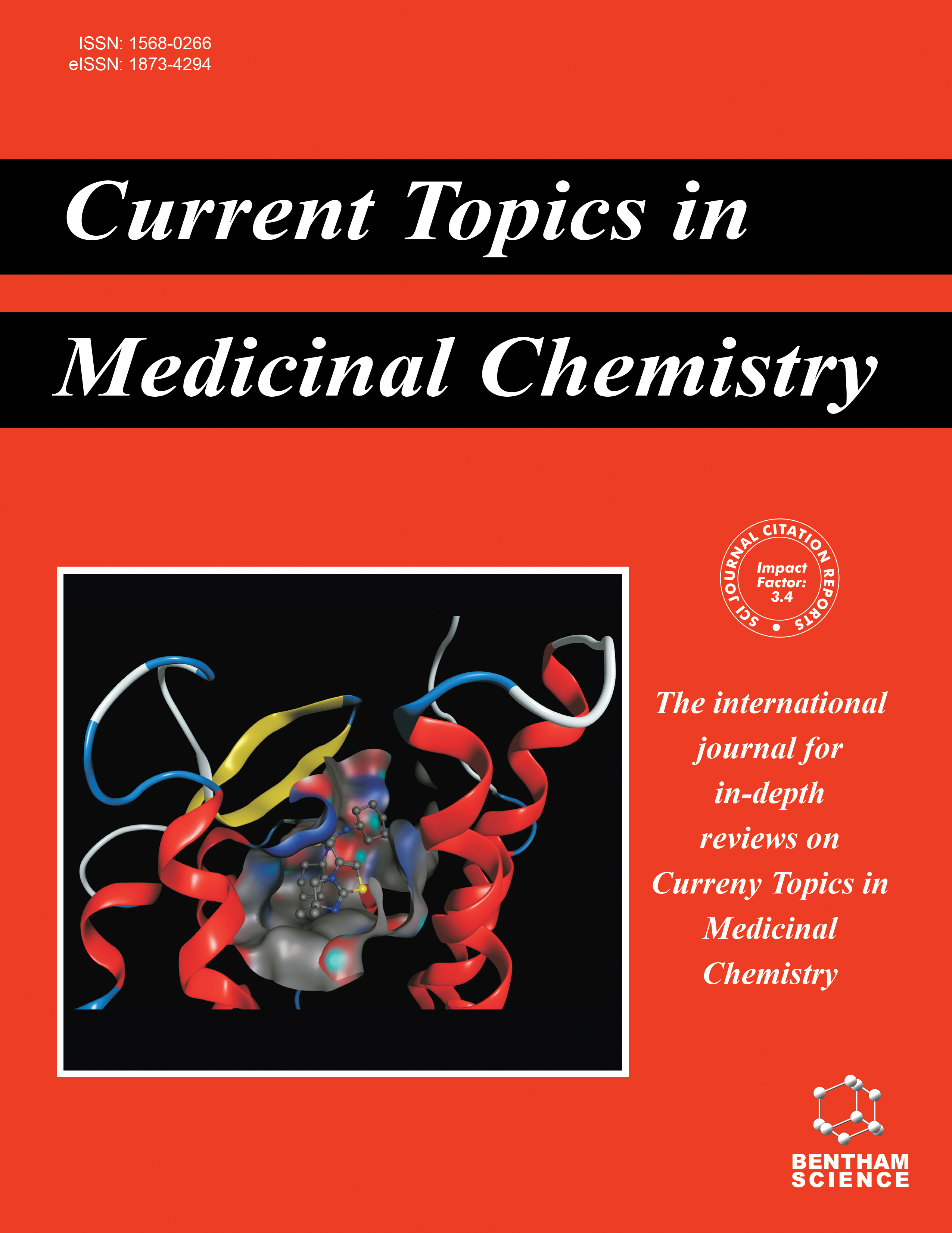- Home
- A-Z Publications
- Current Topics in Medicinal Chemistry
- Previous Issues
- Volume 11, Issue 9, 2011
Current Topics in Medicinal Chemistry - Volume 11, Issue 9, 2011
Volume 11, Issue 9, 2011
-
-
Editorial [Hot Topic: Strategies to Treat Substance Abuse and Addiction (Guest Editor: Christopher R. McCurdy)]
More LessTreatments for substance abuse disorders and improving the understanding of how drugs of abuse behave are important endeavors that still require medicinal chemistry approaches to solve. This special issue includes the discussion of some protein targets that are not well studied and that have no approved drugs specifically targeting them. Certainly, some of the areas discussed in this special issue are hot areas of dru Read More
-
-
-
Design, Synthesis and Interaction at the Vesicular Monoamine Transporter-2 of Lobeline Analogs: Potential Pharmacotherapies for the Treatment of Psychostimulant Abuse
More LessThe vesicular monoamine transporter-2 (VMAT2) is considered as a new target for the development of novel therapeutics to treat psychostimulant abuse. Current information on the structure, function and role of VMAT2 in psychostimulant abuse are presented. Lobeline, the major alkaloidal constituent of Lobelia inflata, interacts with nicotinic receptors and with VMAT2. Numerous studies have shown that lobeline inhibits both Read More
-
-
-
Sigma Receptors and Cocaine Abuse
More LessSigma receptors have been well documented as a protein target for cocaine and have been shown to be involved in the toxic and stimulant actions of cocaine. Strategies to reduce the access of cocaine to sigma receptors have included antisense oligonucleotides to the sigma-1 receptor protein as well as small molecule ligand with affinity for sigma receptor sites. These results have been encouraging as novel protein targets that Read More
-
-
-
The Nociceptin/Orphanin FQ Receptor (NOP) as a Target for Drug Abuse Medications
More LessSeveral studies show that the nociceptin receptor NOP plays a role in the regulation of reward and motivation pathways related to substance abuse. Administration of the NOP's natural peptide ligand, Nociceptin/Orphanin FQ (N/OFQ) or synthetic agonist Ro 64-6198 has been shown to block rewarding effects of cocaine, morphine, amphetamines and alcohol, in various behavioral models of drug reward and reinforceme Read More
-
-
-
Opioid Analgesics and P-Glycoprotein Efflux Transporters: A Potential Systems-Level Contribution to Analgesic Tolerance
More LessAuthors: Susan L. Mercer and Andrew CoopChronic clinical pain remains poorly treated. Despite attempts to develop novel analgesic agents, opioids remain the standard analgesics of choice in the clinical management of chronic and severe pain. However, mu opioid analgesics have undesired side effects including, but not limited to, respiratory depression, physical dependence and tolerance. A growing body of evidence suggests that P-glycoprotein (P-gp), an efflux tr Read More
-
-
-
Mitragyna speciosa, A Psychoactive Tree from Southeast Asia with Opioid Activity
More LessAuthors: Jessica E. Adkins, Edward W. Boyer and Christopher R. McCurdyMitragyna speciosa Korth. (Rubiaceae) is a tree that is commonly found in Southeast Asia. Leaves from this tree have been traditionally been used for both their stimulant properties as well as an opium substitute. The tree/leaves are currently illegal in four countries, but is currently legal and widely available in the United States. To date over 40 compounds have been isolated from the leaves. The major alkaloid found within th Read More
-
-
-
GABAA Receptor Subtype-Selective Modulators. I. α2/α3-Selective Agonists as Non-Sedating Anxiolytics
More LessThe prototypic benzodiazepines, such as diazepam, are not only anxiolytic but also produce sedation. These effects are mediated by GABAA receptors containing either an α1, α2, α3 or α5 subunit at which the positive modulatory effects (i.e., agonist efficacy) of benzodiazepines are mediated via a specific benzodiazepine recognition site. Recent molecular genetic and pharmacological data point to α1-containing GAB Read More
-
-
-
GABAA Receptor Subtype-Selective Modulators. II. α5-Selective Inverse Agonists for Cognition Enhancement
More LessBenzodiazepine site agonists (such as diazepam) are well-known to impair cognition. Since benzodiazepines exert their effects via modulation of α1-, α2-, α3- and α5-containing GABAA receptors, the cognition-impairing effects of diazepam must be associated with one or several of these subtypes. Of these different subtypes, α5-containing GABAA receptors represent an attractive option as the “cognition” subtype based u Read More
-
Volumes & issues
-
Volume 25 (2025)
-
Volume 24 (2024)
-
Volume 23 (2023)
-
Volume 22 (2022)
-
Volume 21 (2021)
-
Volume 20 (2020)
-
Volume 19 (2019)
-
Volume 18 (2018)
-
Volume 17 (2017)
-
Volume 16 (2016)
-
Volume 15 (2015)
-
Volume 14 (2014)
-
Volume 13 (2013)
-
Volume 12 (2012)
-
Volume 11 (2011)
-
Volume 10 (2010)
-
Volume 9 (2009)
-
Volume 8 (2008)
-
Volume 7 (2007)
-
Volume 6 (2006)
-
Volume 5 (2005)
-
Volume 4 (2004)
-
Volume 3 (2003)
-
Volume 2 (2002)
-
Volume 1 (2001)
Most Read This Month
Article
content/journals/ctmc
Journal
10
5
false
en


